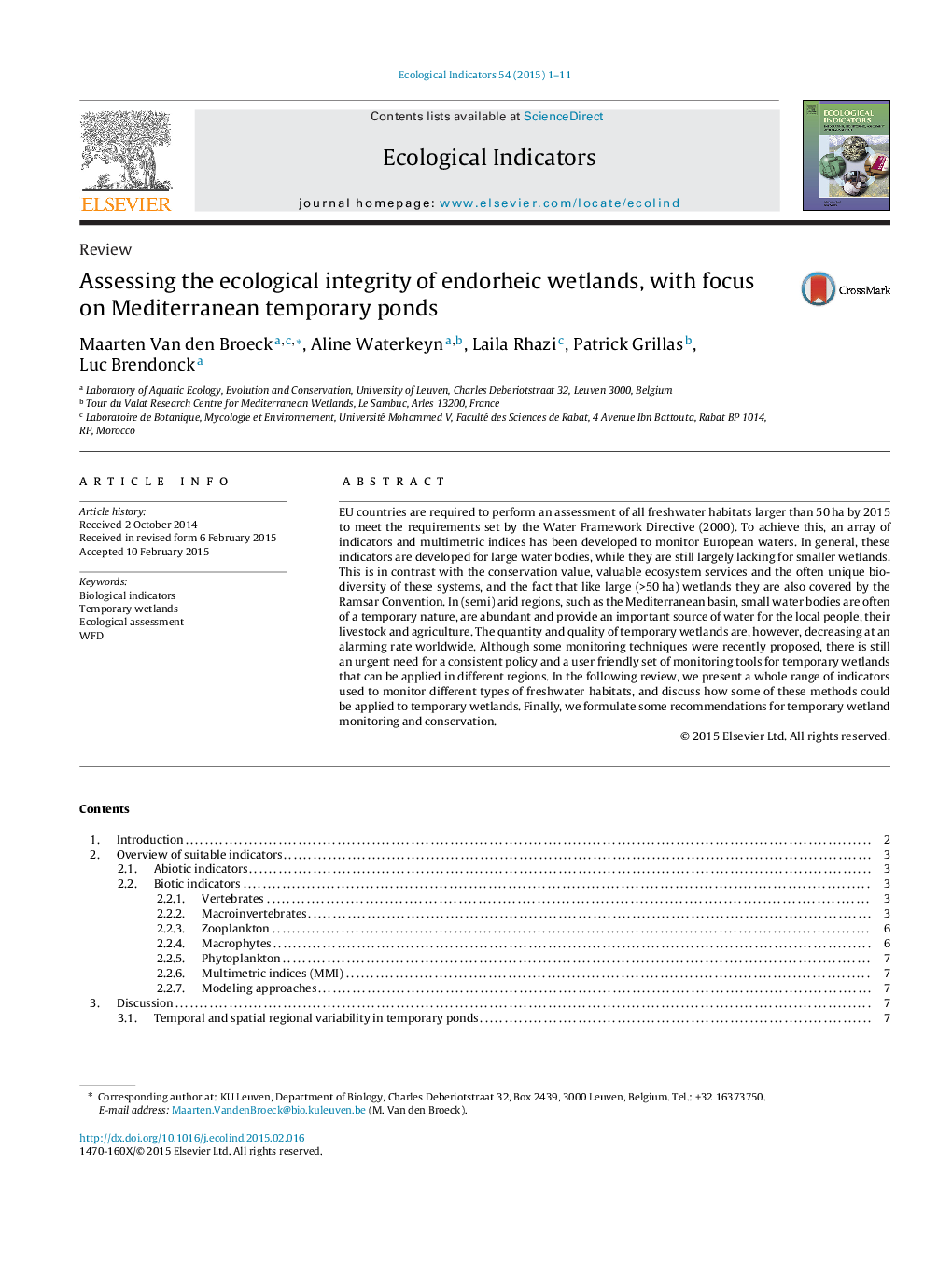| Article ID | Journal | Published Year | Pages | File Type |
|---|---|---|---|---|
| 6294466 | Ecological Indicators | 2015 | 11 Pages |
Abstract
EU countries are required to perform an assessment of all freshwater habitats larger than 50Â ha by 2015 to meet the requirements set by the Water Framework Directive (2000). To achieve this, an array of indicators and multimetric indices has been developed to monitor European waters. In general, these indicators are developed for large water bodies, while they are still largely lacking for smaller wetlands. This is in contrast with the conservation value, valuable ecosystem services and the often unique biodiversity of these systems, and the fact that like large (>50Â ha) wetlands they are also covered by the Ramsar Convention. In (semi) arid regions, such as the Mediterranean basin, small water bodies are often of a temporary nature, are abundant and provide an important source of water for the local people, their livestock and agriculture. The quantity and quality of temporary wetlands are, however, decreasing at an alarming rate worldwide. Although some monitoring techniques were recently proposed, there is still an urgent need for a consistent policy and a user friendly set of monitoring tools for temporary wetlands that can be applied in different regions. In the following review, we present a whole range of indicators used to monitor different types of freshwater habitats, and discuss how some of these methods could be applied to temporary wetlands. Finally, we formulate some recommendations for temporary wetland monitoring and conservation.
Related Topics
Life Sciences
Agricultural and Biological Sciences
Ecology, Evolution, Behavior and Systematics
Authors
Maarten Van den Broeck, Aline Waterkeyn, Laila Rhazi, Patrick Grillas, Luc Brendonck,
